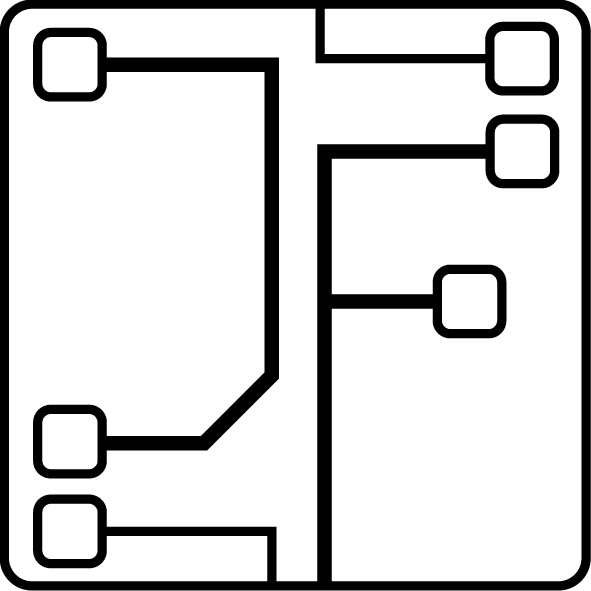Optical Laser Midi Operator
The Story of OLMO
Until the beginning of 2020, I was the proud bass player of a band called Flashback. Unfortunately, after a long break due to the COVID-19 situation, our beloved drummer Olmo decided to leave the band and pursue a different musical adventure.
Finding a new drummer is always challenging, and drummers have the disadvantage of not having a volume knob. Therefore, I decided to seek a different solution to our drummer issue—one that is always on time, has a volume knob, and preferably goes by the name Olmo.
This led to the creation of OLMO: The Optical Laser MIDI Operator.
As far as I know, OLMO is a unique piece of equipment that nobody else has created so far.
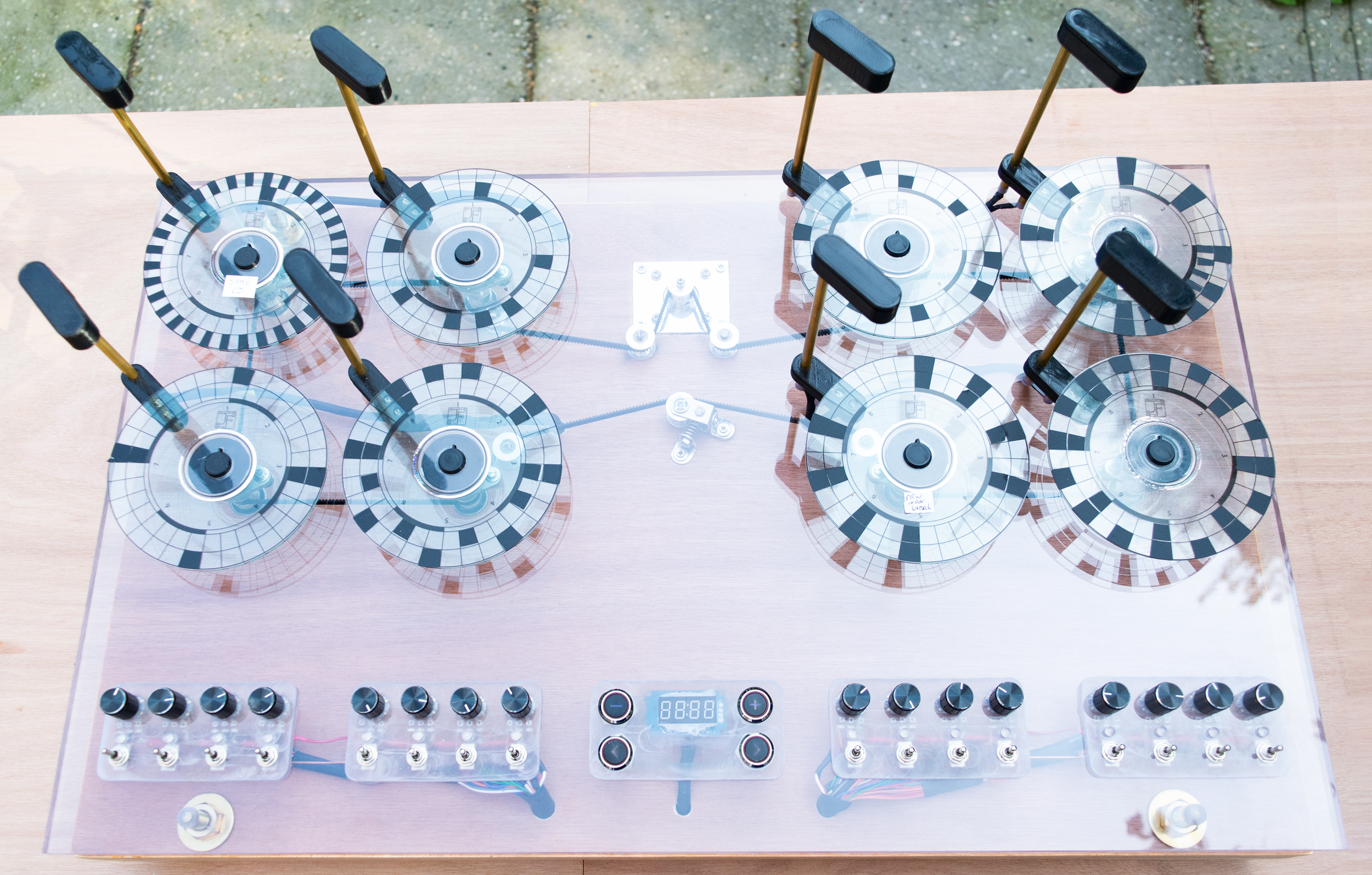
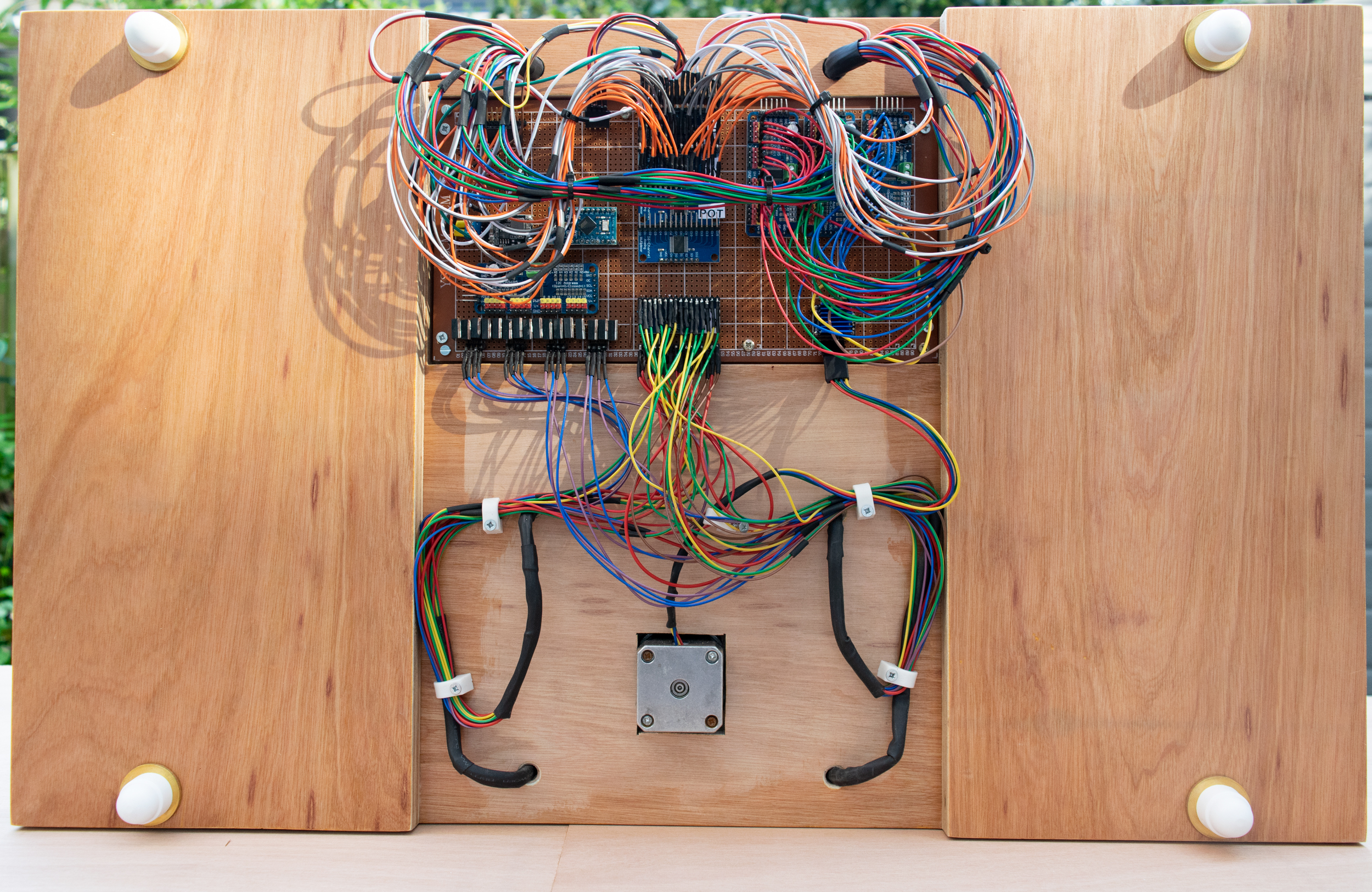
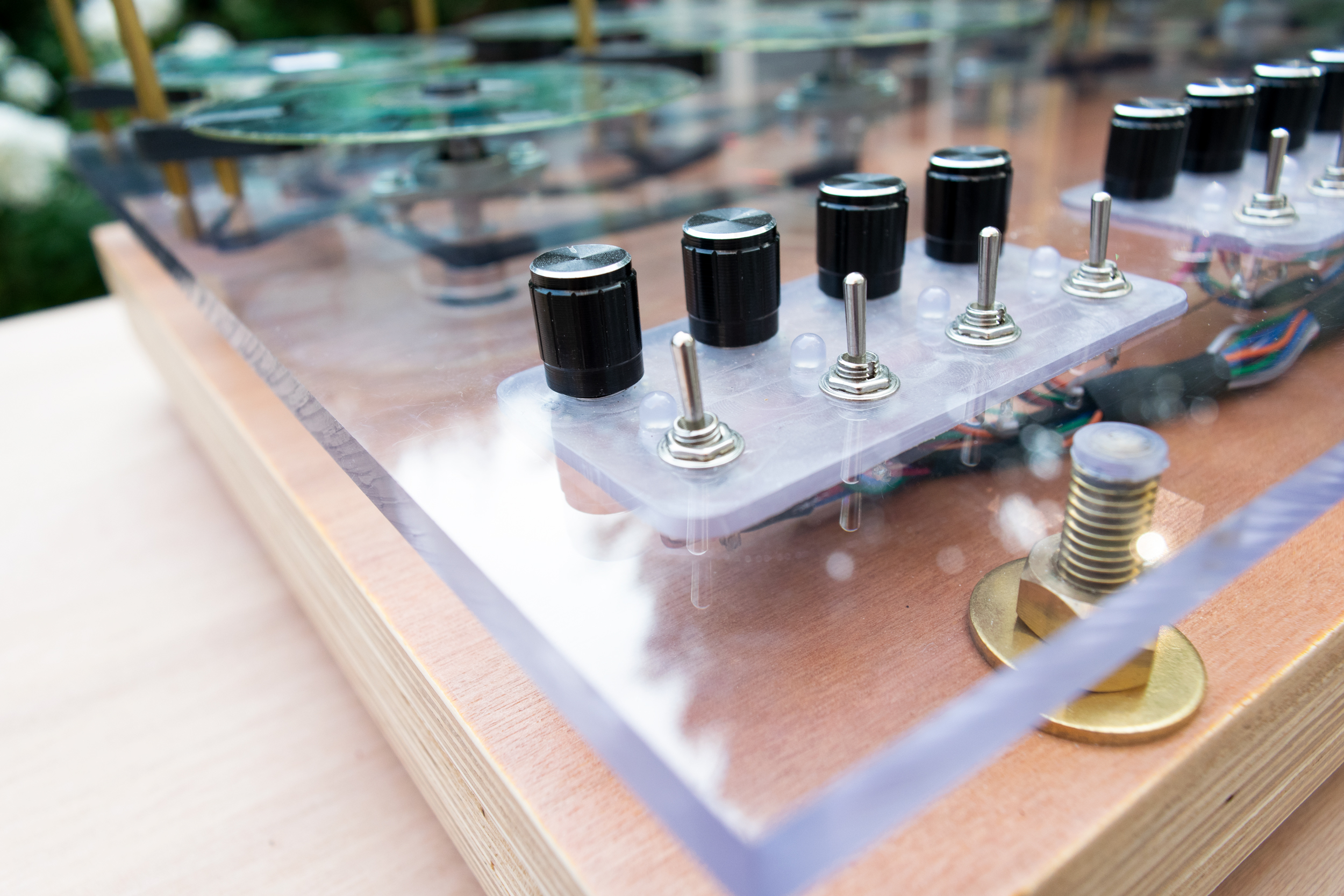
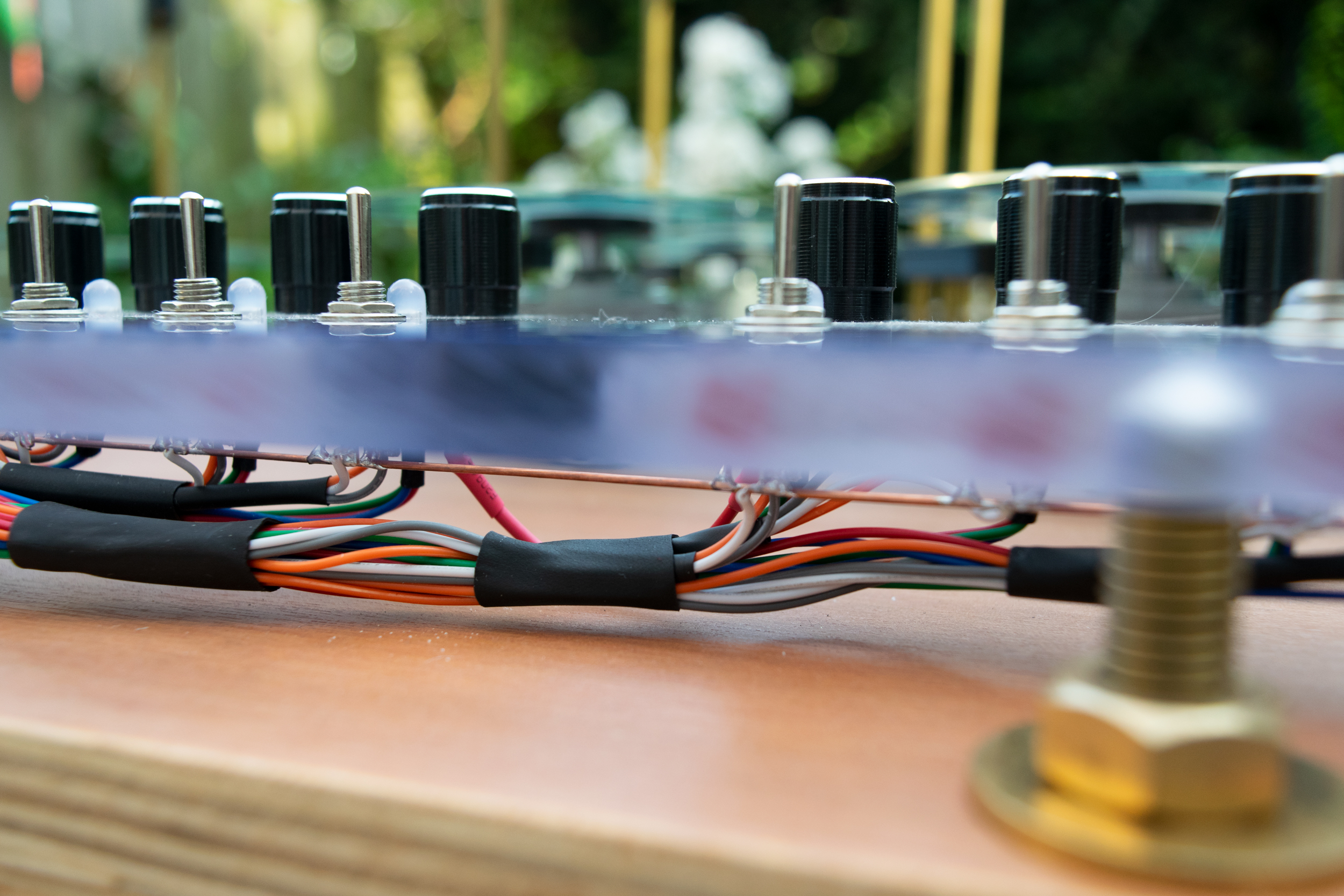
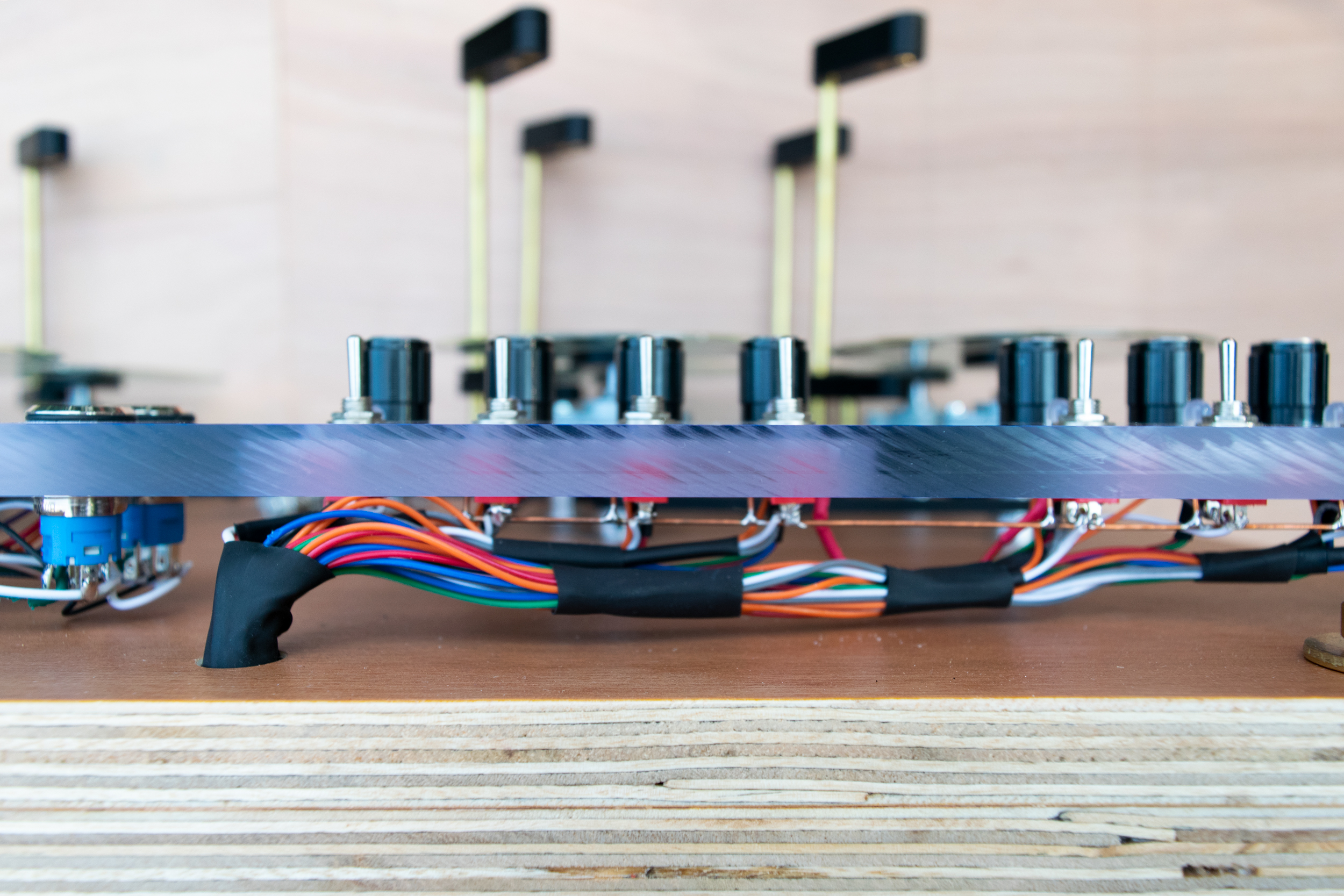
The Idea
The initial concept behind this machine was to create a laser harp—an instrument where interrupting lasers play notes, akin to a harp. However, many variations of laser harps already exist, and I didn’t want to replicate an existing design.
In a moment of inspiration, I realized I could instead develop an automated laser interrupter machine, akin to a barrel organ with a punch card. However, punch cards pose challenges with swapping during playback, and a continuously repeating sequence might become monotonous.
The solution was to utilize a flat, round, transparent medium suitable for lasers—a homage to the Compact Disc. The CD, stripped of its aluminum coating and affixed with a vinyl sticker, is divided into 32 equal boxes across two tracks. The rhythmic pattern is created by adhering precut stickers to the CD in a specific sequence.
Technical Details
This machine falls into the category of a sequencer, playing a repetitive sequence of notes. Each track features a red laser directed at a phototransistor sensitive to red light. When a black sticker interrupts the laser, it is detected by an Arduino Pro Micro[1]. The BPM (beats per minute) can be adjusted by varying the stepper motor speed. All CDs are synchronized perfectly via a shared belt drive and small wedges on each CD.
[1] The Arduino Pro Micro utilizes the ATmega32U4 processor, featuring a native USB port for programming and MIDI communication via a single USB connection. This makes it highly suitable for MIDI projects.
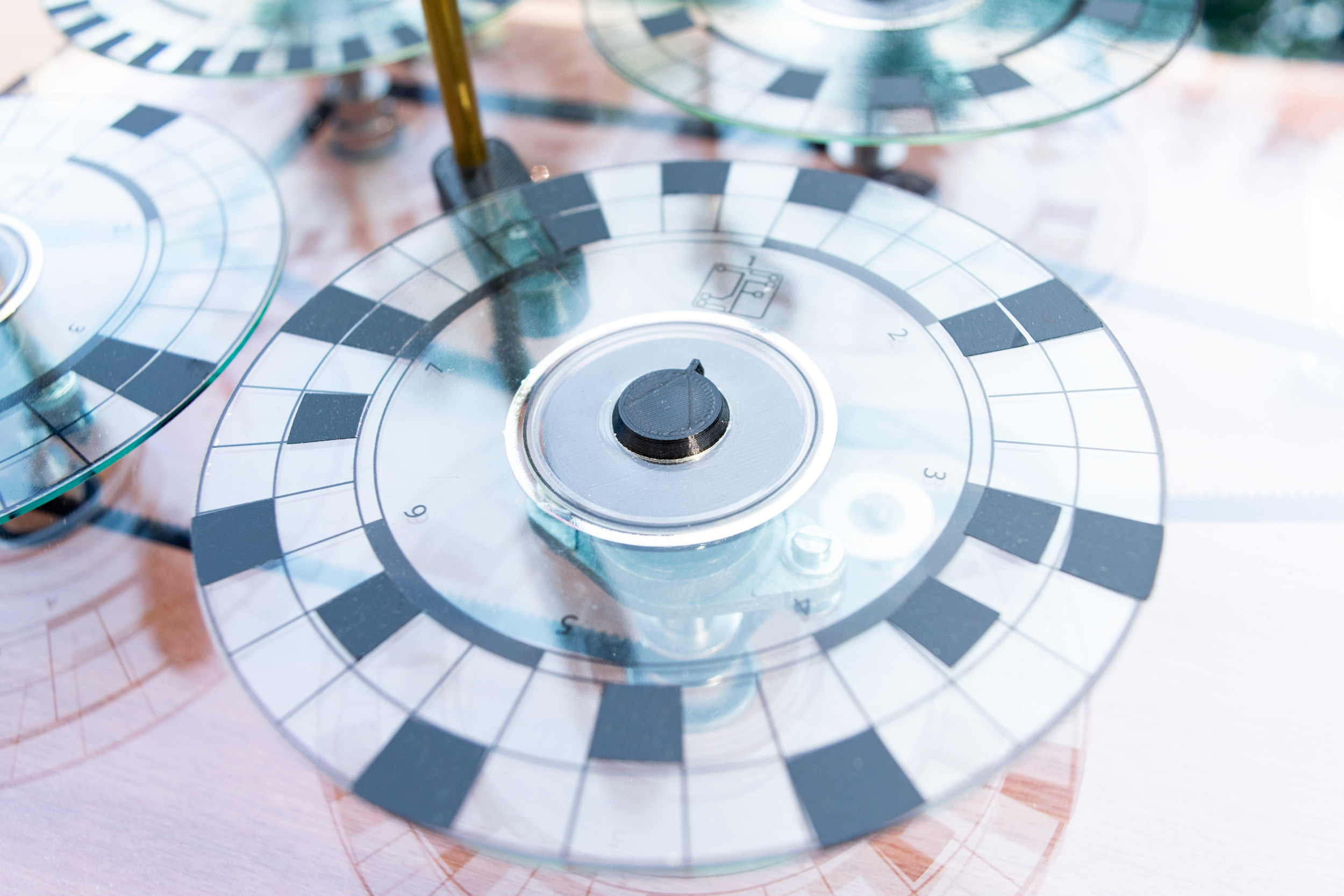
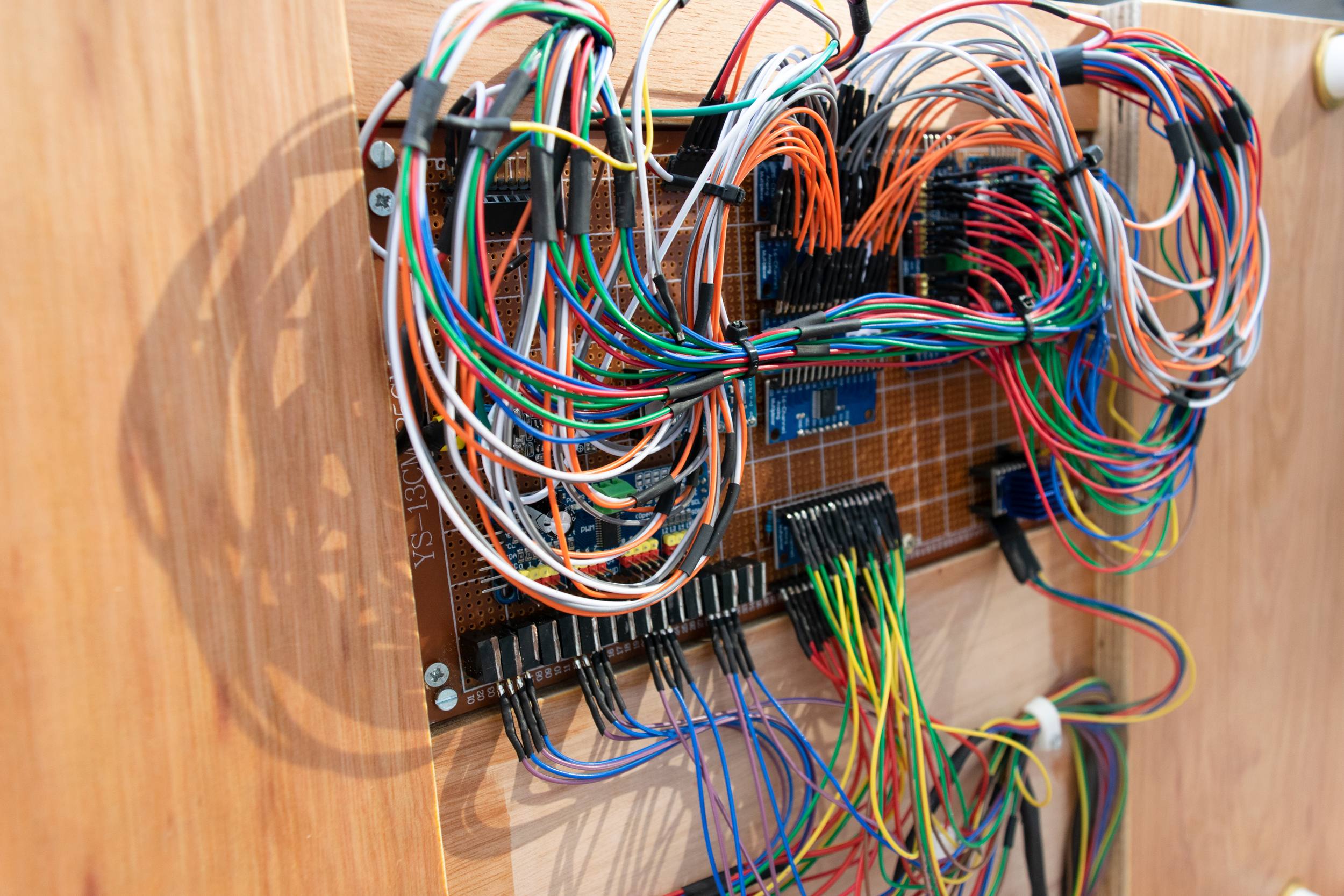
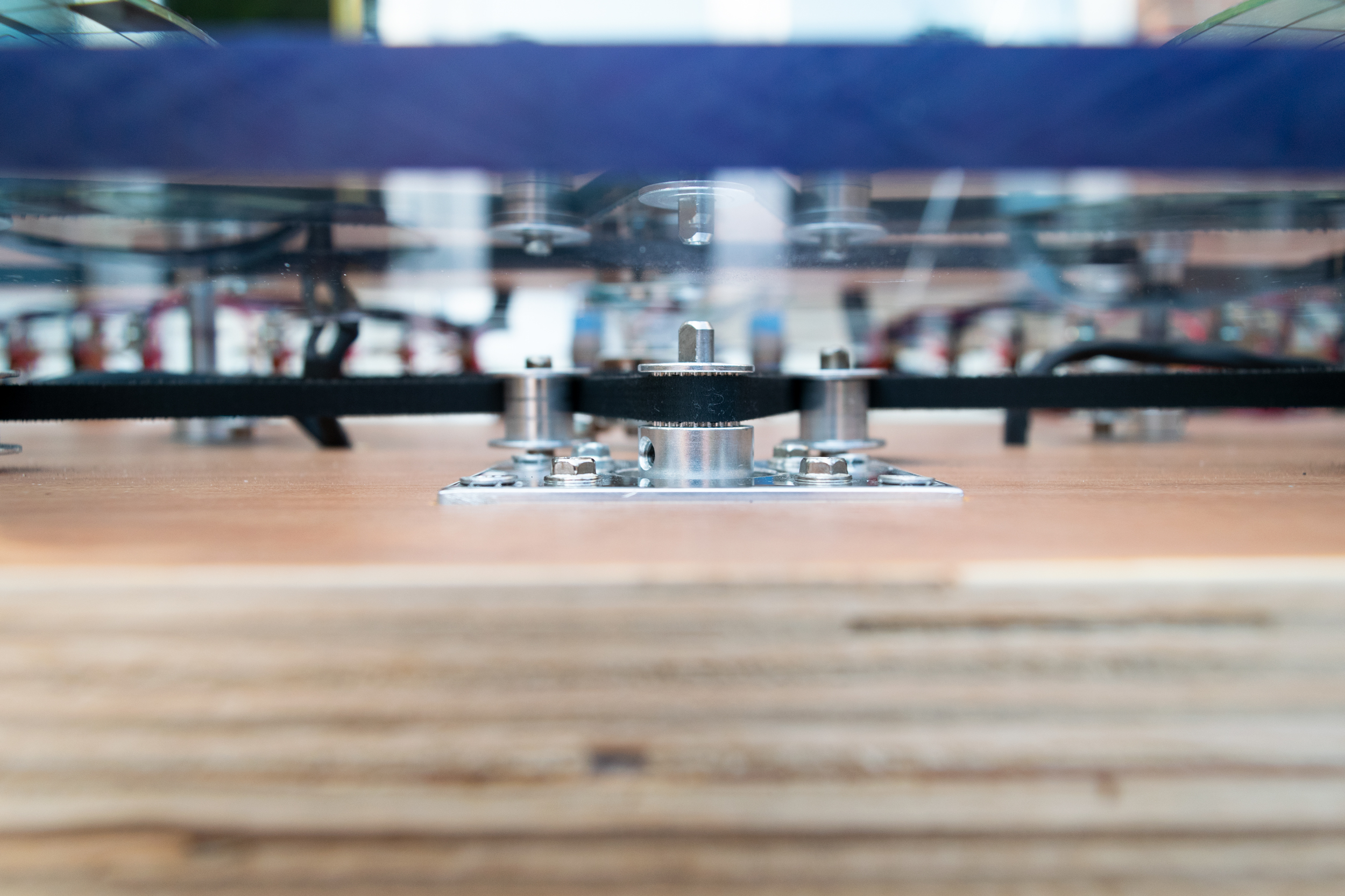
Analog time!
In this video, OLMO is directly connected to a Vermona DRM1 analog drum computer via MIDI.
By setting OLMO to internal clock and manual sync, the device can operate independently of a computer. What’s particularly exciting about this setup is that OLMO can manipulate the sequence while the Vermona, featuring 8 analog drum synths and 7 effect knobs each, shapes the sound.
When used with other synthesizers, OLMO should be set to external clock and auto sync, connecting it digitally through USB or in a MIDI chain for seamless synchronization.
As evidenced by the dust on OLMO, it had not been used for a while, marking just the beginning of exploring its potential in tandem with the Vermona. Nonetheless, this provides a promising introduction to the capabilities of these devices together.
